[Internal Comms] 6 Ways to Measure the Success of Your Company's Virtual Event

Share

Featuring insights from ContactMonkey.
Many internal communicators often find it a challenge to measure the effectiveness of their comms, especially when it comes to online events.
So, how do you truly know your internal event has worked and had the effect you wanted?
We’ve partnered up with ContactMonkey to divulge six ways you can effectively measure the success of your company’s virtual events.
Why Run Virtual Events For Internal Comms?
Before we get into specific metrics, let’s take a quick look at why you should consider running online events for your internal comms…
Reach
Your audience can be much larger and hosting an online event allows you to speak to all employees and offices at once.
This is something which can be difficult with physical events and often results in multiple events and meetings to spread the word around all employees and divisions.
Ease
Ease of access and organisation. Many internal meetings and events can end up just becoming a huddle in the canteen.
This isn’t always ideal, with background noises and distractions that can interrupt speakers. Hosting your internal comms updates online keeps the focus on exactly what you want to communicate.
Eco-Friendly
Substituting road shows and tours with online updates cuts down on mileage and unnecessary travel.
A lot of corporations are focusing on making more green choices and the reduction in carbon footprint from hosting a virtual event is something that can’t be ignored.
How To Measure the Success Of Your Company’s Virtual Events
1. Event Opens & Clicks
Your virtual events actually need to feed into your internal communication strategy and help you achieve that goal. Identifying the right events and whether these are the ones your employees want and appreciate can be tricky.
So, one of the easiest ways is to measure how your employees actually respond to your event email invite.
This will tell you if the topic of your event is interesting – did employees find it compelling and want to learn more about the event?
This is where email journeys can be great as they help measure this interaction in a way that you perhaps wouldn’t be able to on another platform.
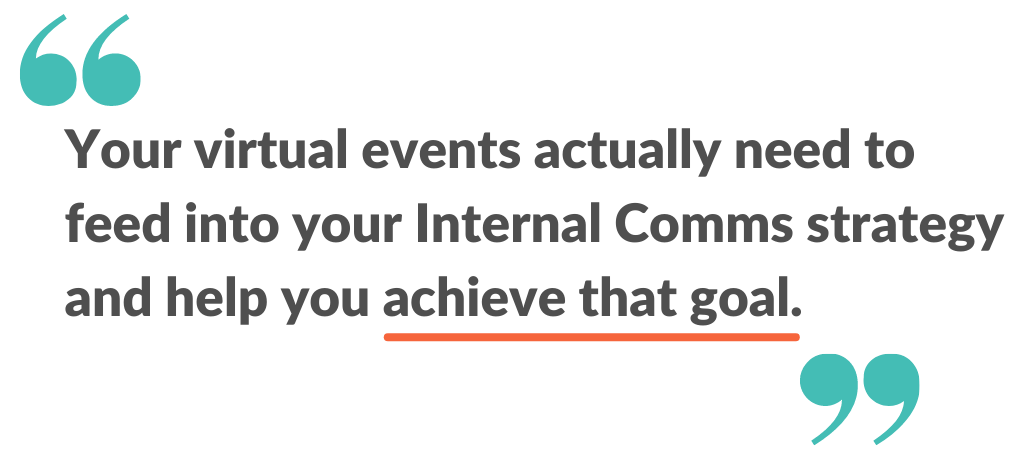
Using an email marketing tool such as ContactMonkey makes it really easy to measure the opens and clicks of your event. The tool allows you to actually create an event in your Outlook inbox.
All you have to do is put in your event details then drag this into a really simple to use email template builder.
This makes it super easy to create an engaging email invite, and employees are able to RSVP to the event directly from your email and add it to their calendar.
Not only does this help you track event success, but it also makes it really easy for employees to engage with an event as well as keep track of upcoming events.
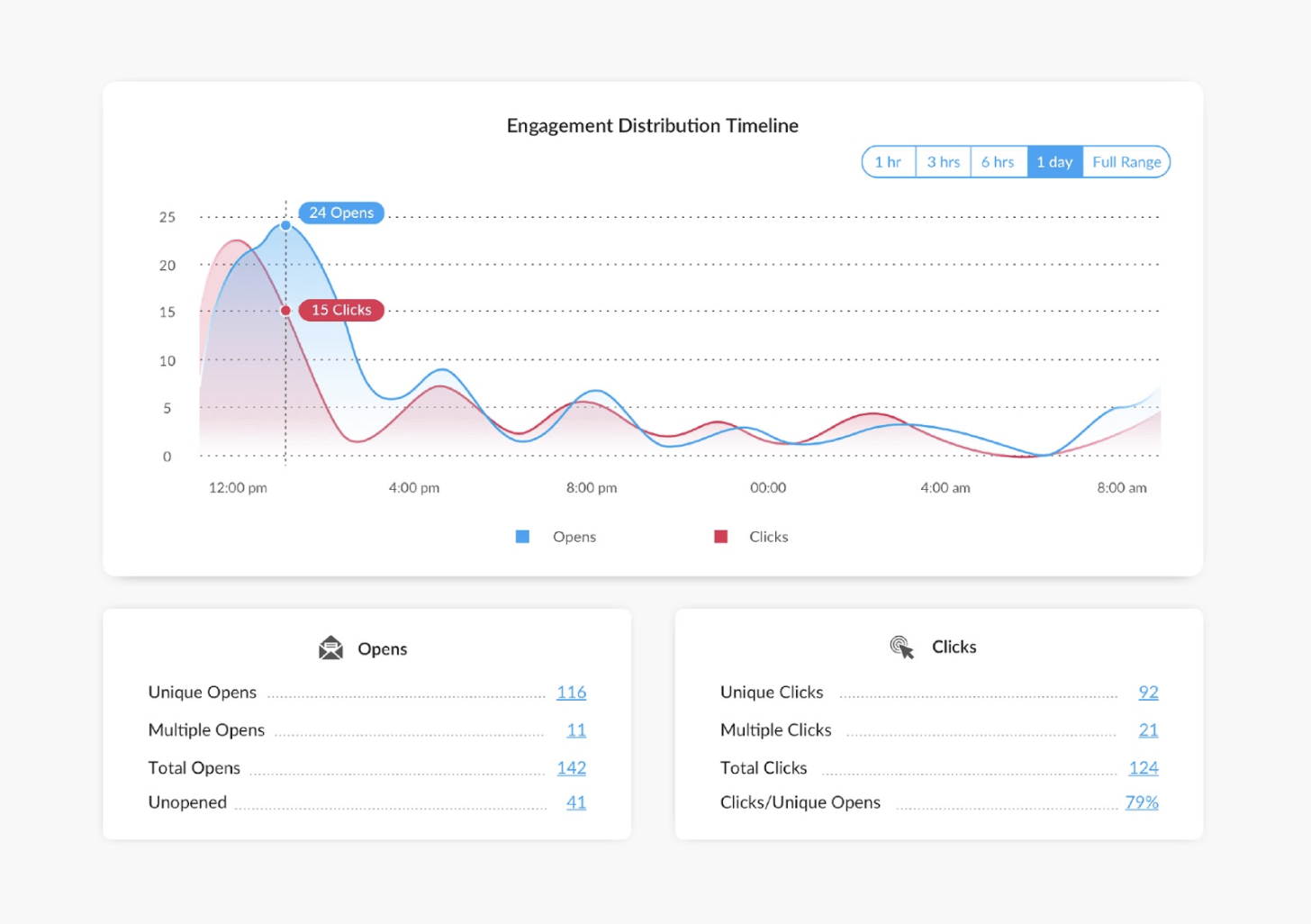
Once your email has been sent you will be able to see how many people have opened and clicked on your email. It’s usually best practice to include the topic or name of your event in the subject line.
A high open rate should tell you that this is something your employees are interested in.
If you see a low open rate, maybe this is an indicator that the kind of events you’re hosting need to be different. Clicks will tell you if the actual subject matter of your email invite is compelling enough for employees to register for the event.
2. Event Registrations
Tracking event registrations sounds obvious, but there are actually different ways to look at this.
Again, using ContactMonkey as an example, since employees can RSVP to all events directly in the email, you will be able to see how many people have registered for the event along with all of their contact details.
What is truly useful about this is that you can analyse which employees have engaged with the event and even narrow it down on a department basis to compare.
Analysing these items helps you refine your virtual events going forward and create a more targeted strategy before your event has even started.
3. Engagement
Tracking ways your employees actually engage with your event is key to understanding how well it’s performing. Here’s a quick overview of all the engagement metric, but we’ll go into more detail below:

Attendance Rate
The most obvious engagement metric is attendance rate. Of course, you want to see how many people have attended the event overall, but breaking this down by departments can give you additional insights.
For example, if you’re launching a product for a particular division in the company, it’s really important that the sales and customer service teams are attending. Therefore, monitoring their attendance rates specifically should be key.
Session Views
A virtual event usually has a number of speakers and events linked together over a period of time, so session views are also a good measurement of engagement.
Higher session views will indicate which speaker or event had the most interesting content, whereas lower views will suggest content that perhaps is being overlooked and needs more work.
Those session views are really important to understand not only who has turned up overall, but which content has been watched and engaged with.
Questions
The more questions the better. Questions are always a good sign that people are interested and engaged. If they care enough to ask the question, they’re definitely invested in knowing more about the subject.
Poll Response Rate
If you’re looking to gather feedback or opinions on something, then making sure that enough people respond to polls is key in coming to a decision at the end.
For example, there are lots of conversations around workplaces and returning to the office at the moment.
During a virtual event you could open up that discussion via a poll. If you get a high response rate you can be confident that opinions are representative of the company as a whole.
If the response rate is low then perhaps you’re not able to make any action or decision just yet.

Clicks
Quite often you may want to launch something internally such as a new resource for the team, especially with people working remotely at the moment.
During an online event you can actually track people clicking on the resource to understand who is downloading it. Again, you may be interested to see if a certain team is accessing this information over others.
Whether it’s a PDF download or link to a resource centre, the virtual event platform you use should be able to tell you:
How many times resources have been accessed
Who has been clicking through to them
This extra bit of tracking is really helpful when you’re looking to launch something. On the streamGo virtual event platform, we actually package this all together to create an engagement score for attendees.
This is attributed to each individual attendee and you can apply it to sessions to get an average engagement score. This will help you see which sessions got the best score or perhaps who was the least engaged. You may then want to segment these people and communicate with them differently to get the best out of them.
Taking all these things into consideration and having the additional insight will really help you create better internal follow-up campaigns.
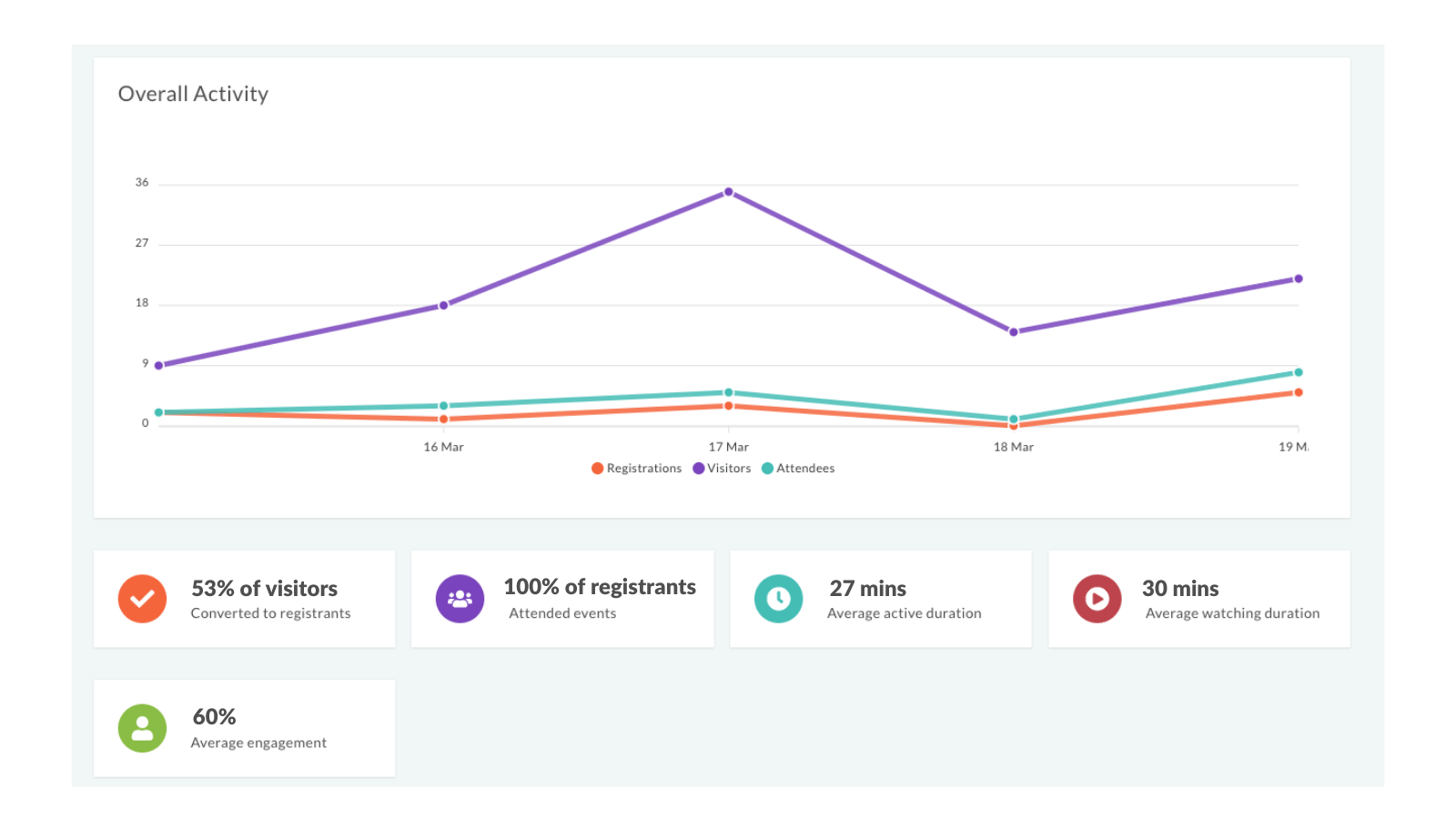
4. Audience Sentiment
Sentiment or the reaction of your audience can be harder to measure with online events as you can’t read things like body language. However, focusing on the softer side of things as well as the hard numbers and data can give you a good understanding.
Types of Questions
Not only should you track the number of questions being asked, but gauge what is actually being asked.
A tool like WordNerds can offer great sentiment tracking by taking a transcript from your event and pulling out key themes and analysis to highlight audience reactions.
Using polls to outright ask people how they feel about something is also a really simple way to measure their reaction to a topic or session.
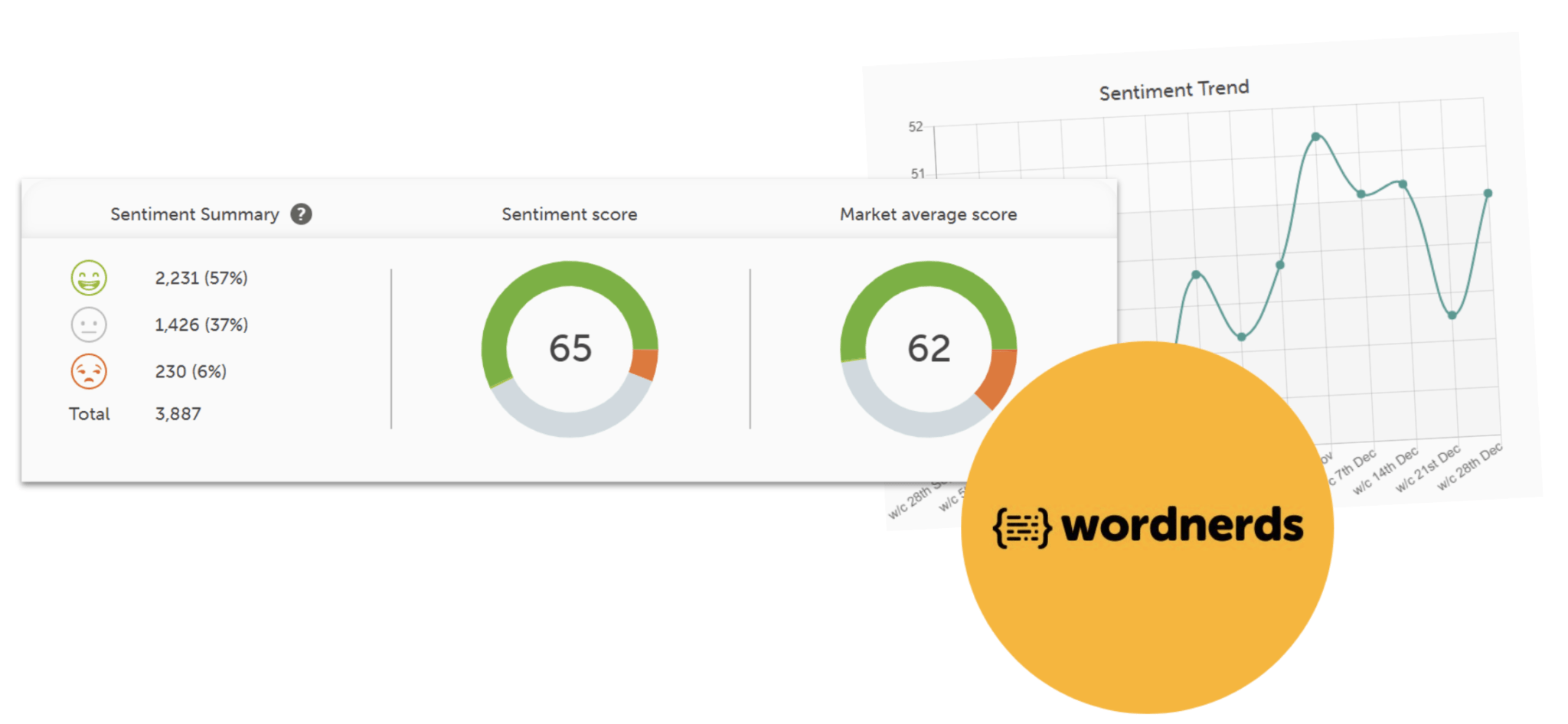
Social Media Reactions

Taking cues from social media and seeing if people are liking and reacting to your event posts is another easy way to gauge audience interest.
You can even replicate those types of reactions on your online event session if you use a platform that allows for it. This will give you real time updates as people are watching your event so you can see how they’re reacting to the content.
Engaged vs. Unengaged
Being able to see who is actively engaging with the online event and who just has it open on a background tab allows you to really see who is paying attention.
At streamGo our platform can show you the difference between who’s engaging with the content by tracking their front tab and mouse activity, versus those who just have it open in a secondary tab.
This is definitely something worth tracking as it may highlight particular sessions with high drop off rates that need more work.
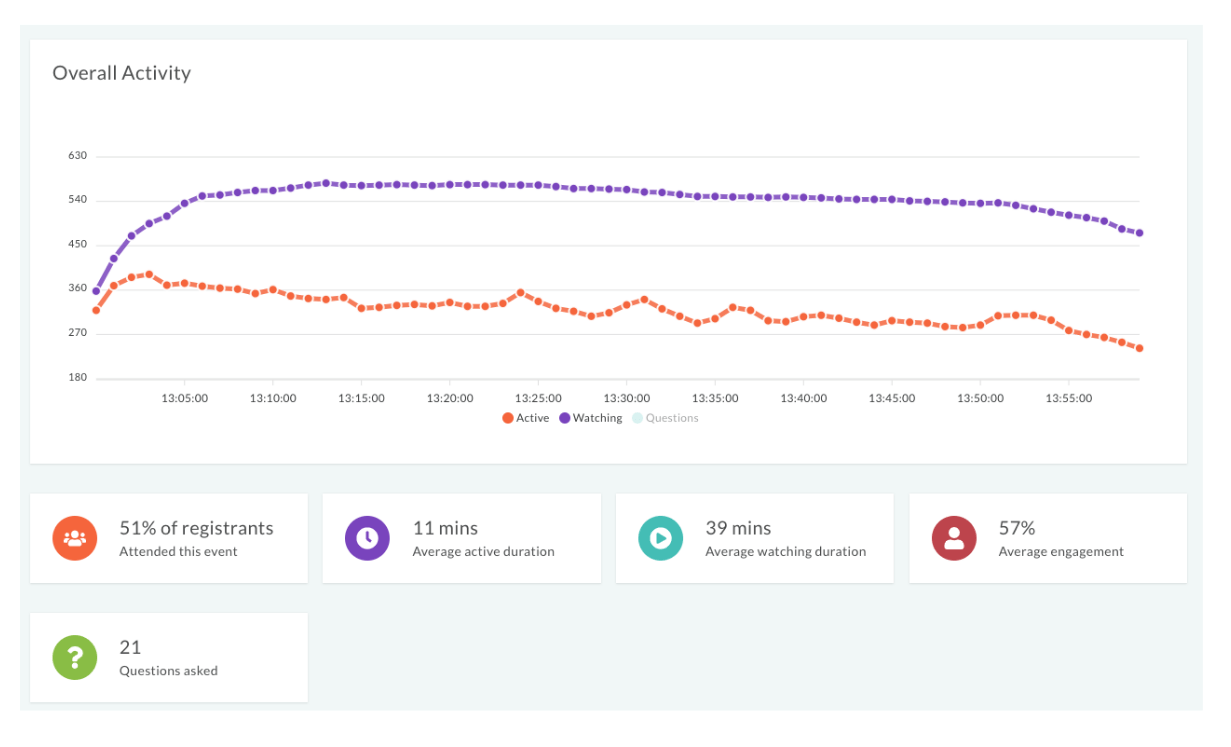
5. Change Makers
Our Remote Control podcasts at streamGo highlighted that a lot of Internal Comms is usually around a change. Whether that’s a change that people are wanting to make, behavioural change or even a change in strategy or branding.
Interactive Content
One thing that can be easily overlooked is the change that you can actually make during the virtual event.
Why not ask people to access pages live during the event and have things like documents and resources readily available? This allows you to report on those types of metrics there and then, rather than including them as part of a follow-up campaign.
Polls and Surveys
Using a poll or survey as we’ve discussed will also allow you to gather this type of live feedback. If one of your outcomes from the event is to gather feedback or opinions from employees, you can do that during your virtual event.
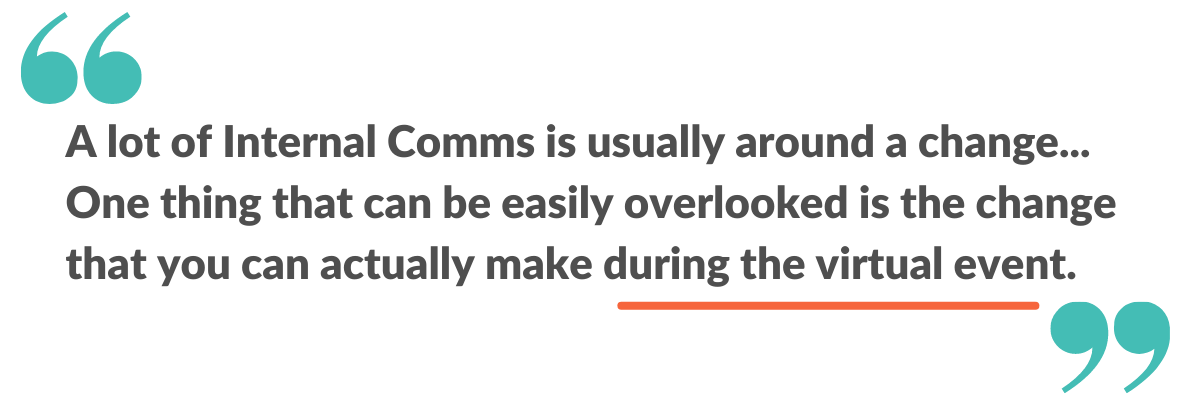
Roundtables
Virtual roundtables let you set up more intimate meetings between groups of people, which could be cross functional or across divisional teams.
Again, these can be included as part of your event to gather more granular feedback instead of having a secondary or follow-up event for further discussions.
Network Matchmaking
Matchmaking can still work well for internal events. For example, you may want to introduce a mentor scheme that matches junior employees with more senior ones, or encourage connections across different divisions.
This often takes a lot of legwork, so using a matchmaking tool within a virtual event is a great option to automate this for you.
Employees would just need to answer different questions to then get matched up with someone depending on the mentor scheme you want to run.
Again, an overall goal for your mentor scheme might be how many matches you’ve made.
You’ve already done that there and then as part of your event without the need for a follow-up.
Follow-Up Campaigns
Use all the data you’ve gathered during your event and bring that to life through your follow up documentation. The most popular sessions give you ready made content that you know is going to be engaging enough to rehash and share.
Data and metrics to measure the success of your virtual events definitely don’t just stop when the event is finished. Take all the information that it holds and you can use it for your campaigns, different channels and even your strategy for a long time to come.
6. Gather Employee Feedback
Of course, there really is no better way to gather feedback than from the horse’s mouth. So employee surveys are an accurate way to measure the effectiveness of your internal event.
However, it’s still a big challenge to motivate employees to actually provide their feedback. Perhaps they just don’t have the patience, they might be overwhelmed with other work priorities or they might not feel comfortable sharing their feedback.
Using an email builder like ContactMonkey offers some great engagement features that are focused on gathering anonymous, candid employee feedback to help you overcome those feedback barriers.
These surveys can be easily embedded into the event emails for employees to provide their answer within seconds.
You can then see feedback scores and any anonymous comments, and even personalise ratings to replicate social media emojis and see what seems to get better response rates.
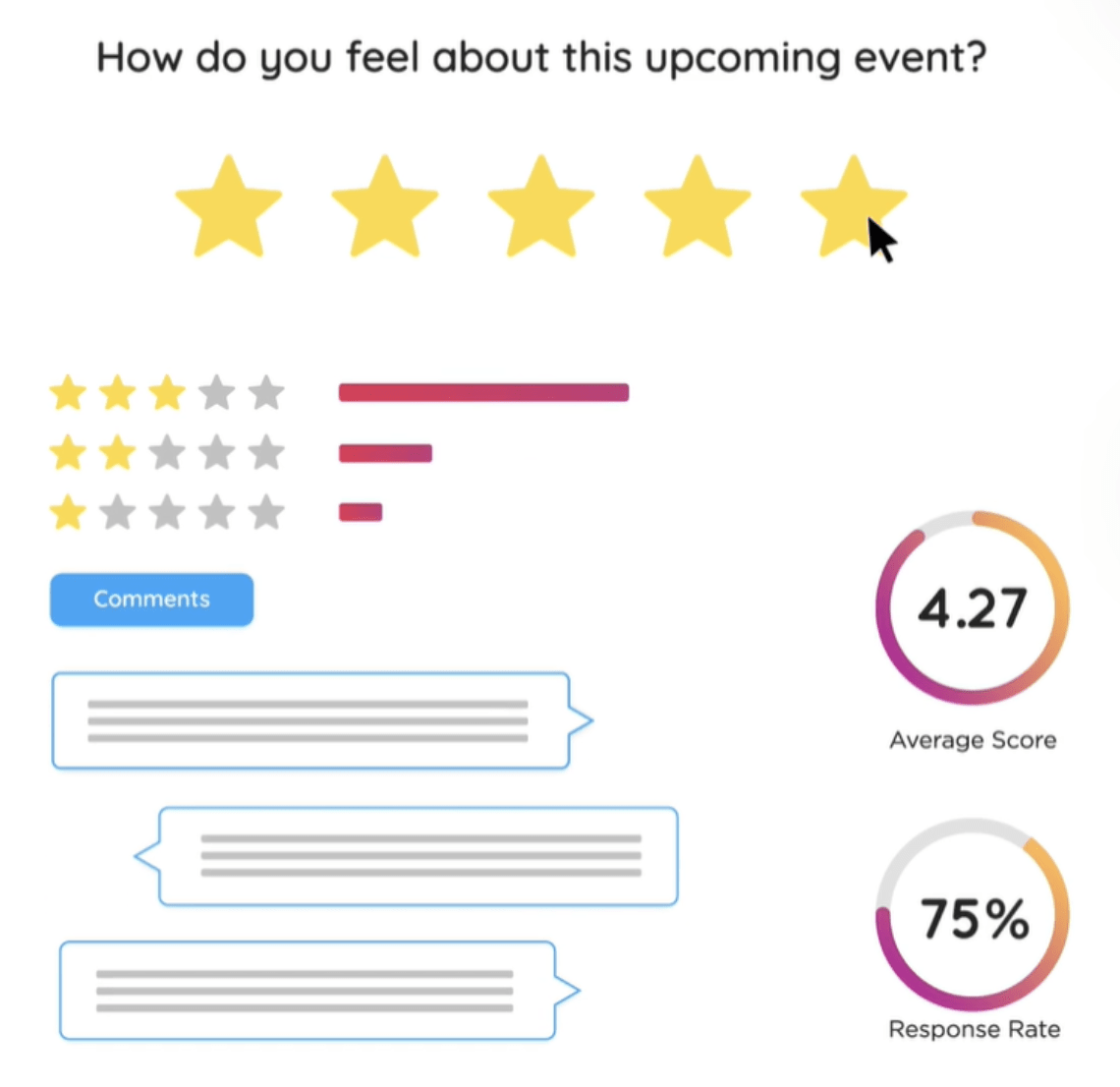
Summary
The hard numbers are extremely important when measuring your event success, but there’s lots of other feedback and metrics that will provide you with the additional insights you’ll need to understand how well your event performed.
Of course, it’s equally as important to use the right tools that will allow you to track and interrogate this data from your events.
Thinking about how you can incorporate the change you want to see during your event will also make it much quicker and easier for you to measure the success of that particular goal.
Hopefully that should give you plenty to think about for your next internal comms event, but you can watch the full webinar with ContactMonkey here at any time.
Inspired for your next online event?
See the streamGo platform in action!




